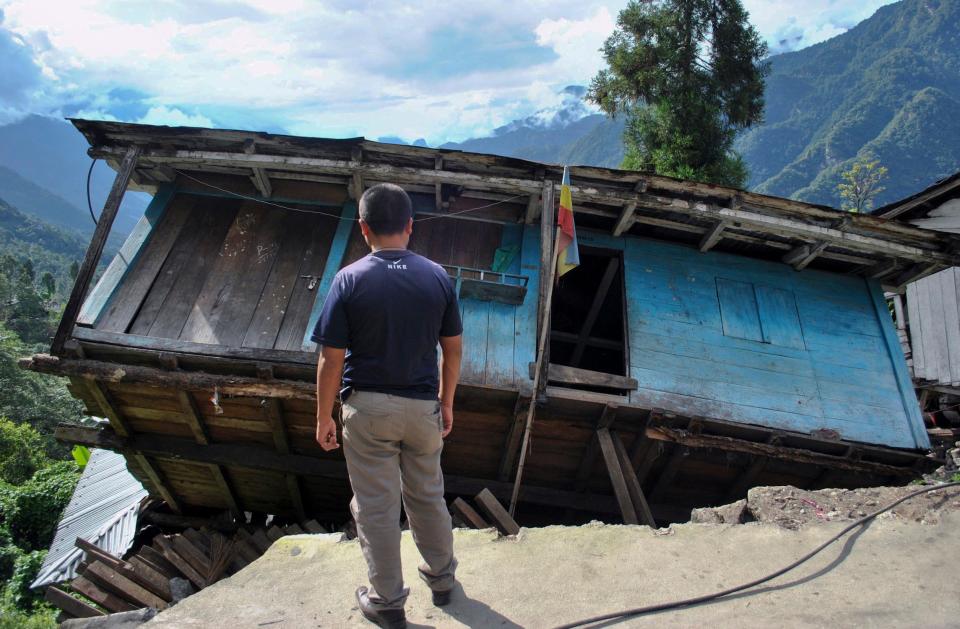Tectonic plates that are causing the Himalayas to grow may also be splitting Tibet in two, study suggests

As the Indian and Eurasian tectonic plates slowly collide, the Himalayan mountains continue to rise.
However a new study suggests the Indian plate may be peeling apart, causing a slab tear.
Scientists say the tear could split the Himalayas, and therefore Tibet, into two pieces.
An eons-long collision that created the Himalayas, the world's tallest mountain range, may also be splitting Tibet apart into two pieces, new research suggests.
The collision of the Indian and Eurasian tectonic plates began 60 million years ago when an island, now known as India, crashed into the continent.
The edge of the Eurasian plate crumpled upward as India pressed into it, thrusting the Himalayas into existence.

The slow-motion collision is still ongoing, meaning the Eurasian plate is still crumpling and the Himalayas continue to grow. But scientists haven't been sure where exactly the Indian plate was going. Is it sliding directly under the Eurasian plate, skimming its underside? Or is it plunging deeper into the layer of mantle below?
New research paints a chaotic picture where both things are happening: The Indian plate is peeling apart, with its buoyant upper crust detaching from its dense bottom layer.
What's more, that process is creating a vertical split in the plate beneath Tibet, as the peeling section tears away from an adjacent region that's not peeling, the new findings suggest.

That doesn't mean a giant crack is going to open across the surface of Tibet. Rather, there seems to be a lot more going on deep beneath the surface than scientists realized.
Still, this "slab tear" under Tibet could drive hazardous earthquakes in the region.
The research has not yet undergone peer review, but it was presented at the meeting of the American Geophysical Union in December, and a pre-print version of the paper was published online.
"We didn't know continents could behave this way and that is, for solid earth science, pretty fundamental," Douwe van Hinsbergen, an Utrecht University geodynamicist who was not involved in the research, told the magazine Science.
Simon Klemperer, a geophysicist at Stanford University, worked with colleagues at three Chinese research institutions to piece together this picture of the plates. They studied earthquake waves that passed through the deep layers below, examined the locations of earthquakes under Tibet, and analyzed gases rising into hot springs above.
"We speculate that this slab tear may divide the mountain chain along its length," the scientists wrote in a summary of their findings.
The Himalayas run along the southern edge of Tibet, which sits on a plateau about 13,000 ft above sea level.
Though no direct link has been documented, these deep shifts in the earth might affect earthquakes near the surface, van Hinsbergen told Science.
Scientists have long thought this type of tearing could happen when continental plates collide, but this is the first time it's been "caught in the act," van Hinsbergen said.
Read the original article on Business Insider

 Yahoo News
Yahoo News 
